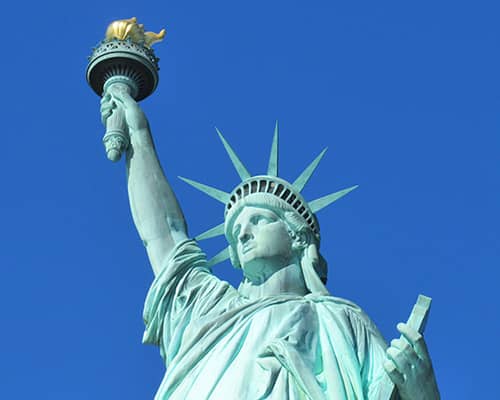The History of New York

The history of New York dates back to around 10,000 B.C., when the first settlers are believed to have arrived. By 1100 A.D., the Iroquoian and Algonquian peoples had established their presence in the region. Giovanni da Verrazzano was the first European to discover New York, which was later claimed by the Dutch and named New Netherland. This colony became crucial for the fur trade and developed into an important agricultural center. The Dutch obtained Manhattan Island from the Native Americans. Eventually, England renamed the colony New York in honor of the Duke of York and Albany, the brother of King Charles II. By the 18th century, New York had emerged as the primary trading port among the thirteen colonies.
After the British evacuated Boston, George Washington anticipated that New York City would be their next target. The city played a significant role in the American Revolution, hosting nearly a third of all battles fought on its soil, including the Battle of Long Island and the Battle of Saratoga. Following a defeat at the Battle of Long Island, the Continental Army faced numerous challenges, leading to a retreat from the New York City area and leaving the strategic port under British control for the remainder of the war. The British occupied New York City for nearly seven years, from 1776 until the war’s conclusion in 1783. During this period, thousands of American prisoners of war were held by the British on prison ships in Wallabout Bay, near Brooklyn. The Battle of Saratoga was a turning point, resulting in France forming an alliance with the Americans. In 1777, New York adopted its constitution, significantly influencing the United States Constitution. From 1788 to 1790, New York City served as the national capital, where the Bill of Rights was drafted. Albany became the permanent state capital in 1797, and in 1787, New York became the eleventh state to ratify the United States Constitution.



Throughout the 19th century, New York saw considerable advancements in transportation, including the launch of the first steamboat line and America’s first regularly scheduled rail service in 1831. These developments encouraged settlement in western New York and strengthened trade connections with the Midwest around the Great Lakes. Due to its trade ties with the South, New York City had many Southern sympathizers during the early phases of the American Civil War. Although far from the battlefields, New York contributed the most soldiers and funding to support the Union. The state played a crucial role in the onset of the industrial age and was home to some of the earliest labor unions. New York City became the primary entry point for European immigrants to the United States, with millions passing through Battery Park before Ellis Island opened in 1892, welcoming many from Eastern and Southern Europe. The unveiling of the Statue of Liberty, a gift from France in 1886, became a powerful symbol of hope.
In 1898, the contemporary city of New York was formed into the five boroughs: Manhattan, Brooklyn, Queens, the Bronx, and Staten Island. This consolidation led to substantial growth in population, industry, and wealth, alongside major infrastructure projects like the subway system and bridges connecting the boroughs. New York thrived during the Roaring Twenties, before the Wall Street Crash of 1929. Between 1913 and 1974, New York City was home to some of the tallest buildings in the world.


